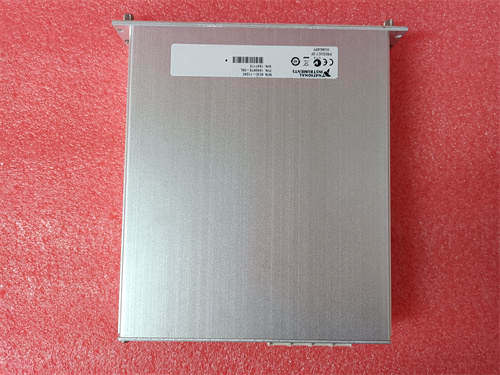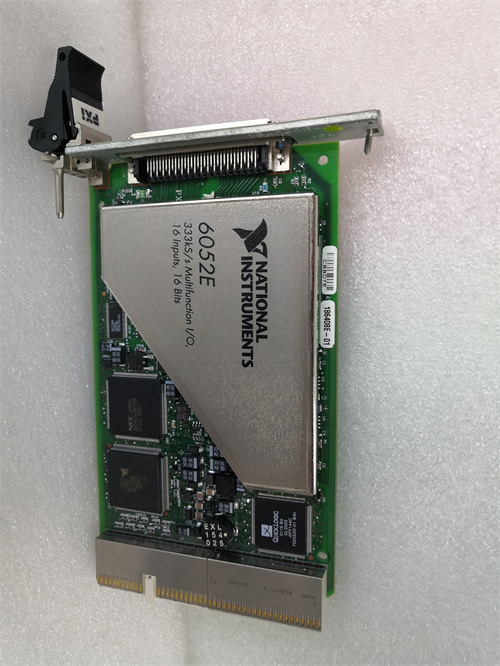Description

Parameter Specifications
- Power Supply: The USB – 6525 is typically powered via the USB interface, drawing power directly from the connected host computer. It usually consumes less than 2W of power, making it energy – efficient.
- Digital I/O Channels: It is equipped with 24 digital input/output (I/O) channels. These channels can be individually configured as either inputs or outputs. The input channels can accept TTL – compatible logic levels, and the output channels can drive loads up to 24V DC with a current capacity of 250mA per channel.
- Communication Interface: As the name suggests, it uses a USB 2.0 interface for communication with the host computer. The USB interface provides a high – speed data transfer rate of up to 480Mbps, enabling fast and reliable data exchange between the device and the computer.
- Operating Temperature Range: It is designed to operate within a temperature range of 0°C to 50°C, suitable for normal indoor industrial and laboratory environments.
Applications
- Industrial Automation: In manufacturing plants, the USB – 6525 can be used for basic automation tasks. For example, it can control the operation of small – scale conveyor belts, monitor the status of sensors on production lines, and manage the opening and closing of solenoid valves.
- Test and Measurement: In research laboratories, it can be used for test and measurement setups. It can be used to control test equipment, such as power supplies and signal generators, and collect data from sensors during experiments.
- Educational Purposes: In educational institutions, it can be used in engineering and electronics courses to teach students about digital I/O control and USB communication. Students can use it to build simple automation projects and understand the principles of data acquisition and control.
Weight and Dimensions
- Weight: Approximately 0.1 kg, which is very light and easy to handle and install.
- Dimensions: It has a compact design, with dimensions of about 80mm (length) x 60mm (width) x 20mm (height). This small size allows it to be easily placed on a desktop or integrated into small – scale control systems.
Features
- Ease of Use: The USB interface makes it extremely easy to connect to a computer without the need for additional power supplies or complex wiring. It also comes with user – friendly software for configuration and programming, reducing the learning curve for users.
- Flexible I/O Configuration: The ability to individually configure each of the 24 I/O channels as an input or output provides great flexibility in different applications. Users can adapt the device to various requirements by simply changing the configuration settings.
- Low – cost Solution: It offers a cost – effective solution for basic digital I/O control and data acquisition tasks, especially for small – scale projects and applications where high – end features are not necessary.
Stability and Reliability
- Robust Design: Built with high – quality components, it can withstand normal handling and minor shocks. The USB interface also provides good electrical isolation, protecting the device from electrical interference.
- Driver Support: It is supported by reliable device drivers that ensure stable communication between the device and the host computer. These drivers are regularly updated to improve compatibility and performance.
- Long – term Testing: Through long – term testing, it has been proven to have a reliable performance over time, with a low failure rate.
Practical Case
In a small – scale 3D printing workshop, the USB – 6525 is used to control the movement of the print head and the opening and closing of the material feeder. The digital output channels are connected to the stepper motor drivers of the print head, and the input channels are connected to sensors that detect the position of the print bed. When a print job starts, the host computer sends control signals to the USB – 6525 via the USB interface. The USB – 6525 then drives the stepper motors to move the print head to the correct position and controls the material feeder to dispense the appropriate amount of printing material. One day, there was a brief power glitch in the workshop. Thanks to the stable design and electrical isolation of the USB – 6525, the device continued to operate normally after the power was restored, and the 3D printing process resumed without significant interruption.









Reviews
There are no reviews yet.